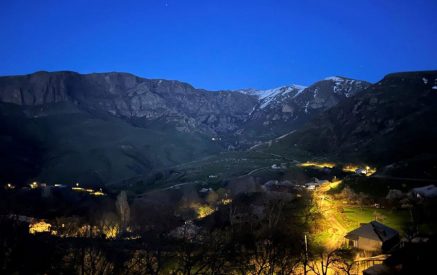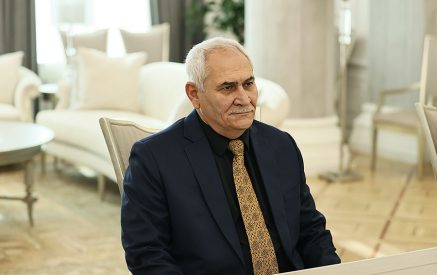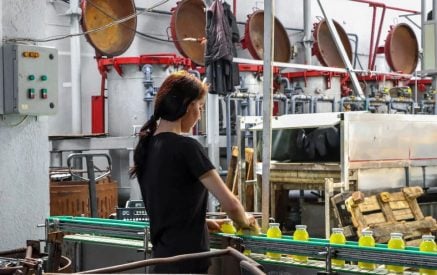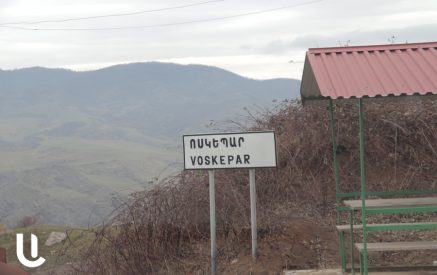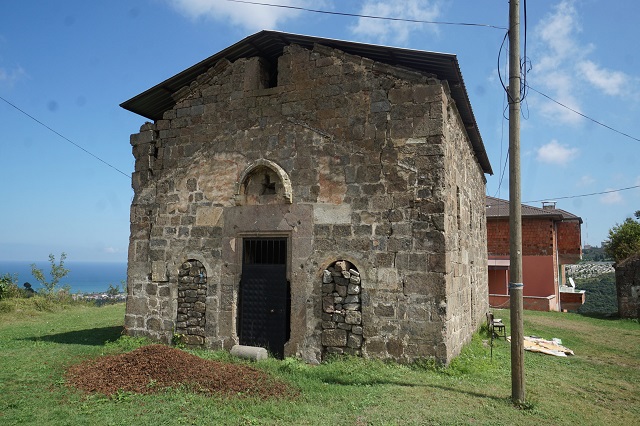The Armenian Weekly. Continuing the search for authenticity, truth and the origins of the world, I had to stop and study Trebizond.
Trebizond comes from the word ‘Trapezous’, which in Greek means table – the table of abundance, characterizing the wealth accumulated due its intense commercial activities and its strategic significance on the road between Europe and Asia, West and East.
The city was founded in 756 BCE by Greek colonizers from Sinopi (Sinop), the metropolis of the Black Sea founded in the seventh century BCE from Greek colonizers originating from Miletos (Milet) on the Aegean coast of Asia Minor.
Trebizond was influenced by the ancient Armenian Kingdom of Urartu (ninth to sixth century BCE), which most probably traded with the Greek inhabitants, as suggested by the Urartian characteristics of the artifacts found in the area.
Populations of the Black Sea area around Trebizond were converted to Christianity as early as the third century CE.
Huge monastic complexes were founded, which served as libraries and centers of study, where culture and identity were preserved during times of danger. St. John Vazelon Greek Monastery was founded in 270 CE.
Close to Georgia, Trebizond was of great interest to the Georgian monarchy, who tried to sever it from the central authority of Constantinople during the Eastern Roman-Byzantine Empire. Queen Tamar of Georgia, related to the Comnenos family (the royal Byzantine dynasty of Trebizond), encouraged the formation of the Empire of Trebizond in 1204 CE, taking advantage of the siege of Constantinople by the Crusaders during the Fourth Crusade.
This phenomenon is common in imperiums, where a central power (Constantinople) tries to dominate the periphery (in this case, Trebizond—a centripetal force). As peripheral powers like Trebizond develop, they try to secede and become independent and autonomous of the central power (in this case Constantinople—centrifugal force).
Trebizond eventually developed into a major center of commerce for produce from Asia, which was transported on ships sailing the Black Sea to the West. Marco Polo was among its visitors in 1295 CE; Trebizond served as a major port on the Silk Road.
The Armenian population fled to Trebizond from the nearby ancient Armenian capital Ani, especially after the Mongol attacks of the thirteenth century CE.
Trebizond fell in 1461 CE, eight years after the fall of Constantinople in 1453 CE. It was a short prolongation of ideological and cultural Renaissance before the final Turkish conquest and halt of progress.
After the expansion of the Turks and the Islamization of the local Christian populations, Greeks took to the mountains, in order to gain some autonomy. The Greek aspirations for independence leading to the rebel war started from there, similar to the Armenians escaping to the mountains of Zeitun in Cilicia.
The Armenian population thrived along with the Greek one. Both were subjected to systematic persecution and genocide.
Most of the Armenian population was taken into boats in the Black Sea in 1915 and thrown overboard to drown.
Upon asking the locals about what happened to the Armenians, some stated in frustration and a certain degree of guilt that they did not know. Some stated they just left, while some denied angrily that no crime was committed. I asked them, “So then where are they? Where did they go?” No response.
Among the numerous Armenian monuments of Trebizond, the only one remaining is Surp Amenaprgich Vank (All Savior Monastery, also known as Kaymakli Monastery). It was most probably built on the site of an earlier Christian settlement around 1424 CE by Stepanos Shemsedin.
The monastic complex, which once preserved numerous Armenian manuscripts, was pillaged and destroyed by the Turks in 1461 CE.
The gorgeous frescoes, dating to the seventeenth-eighteenth century CE, still extant on the walls of the remaining small chapel, display various scenes, among them scenes from the Last Judgement. Precious khachkars carved on the walls of the small chapel can still be seen.
The complex served as a concentration camp to prepare deportation to Syria during the 1915 Armenian Genocide. It was also used as a barn.
It is interesting to compare the architecture and function of Surp Amenaprgich Vank Armenian Monastery to Saint Sophia of Trebizond Greek Church, founded in the 13th century AD.
A brief Russian presence in 1916 after the Armenian Genocide, which ended shortly after the Bolshevik Revolution in 1917 and the retreat of the Russian Army from the Southern Shore of the Black Sea, abandoning Russian imperialistic plans, further betrayed Greek and Armenian hopes for the end of oppression and persecution and led to further retaliation and the mass exodus of the remaining Greek and Armenian population in 1923.
In these challenging times of natural calamities and cultural/ideological stagnation, it is important to reconnect with our point of reference, our historical conscience and the masterpieces of art created in Asia Minor by Armenian and Greek masters, so that we can move on to the future with perspective, values and high standards.
Dr. Anastasios Mavrakis
Main caption: The exterior of Surp Amenaprgich Vank, 2019 (Photo: Dr. Anastasios Mavrakis)






